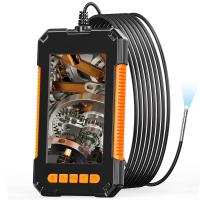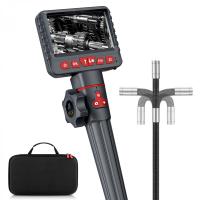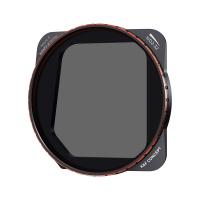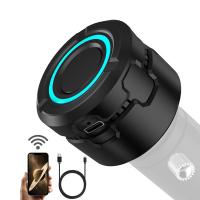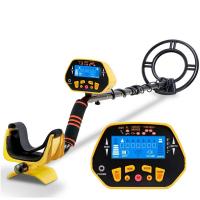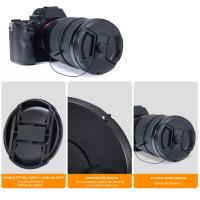What Is Travelling Microscope ?
A travelling microscope is a precision instrument used for measuring small distances with high accuracy. It consists of a microscope mounted on a carriage that can be moved along a graduated scale. The microscope has a calibrated screw that allows the user to make precise adjustments to the position of the object being measured. The instrument is commonly used in physics and engineering laboratories for measuring the thickness of thin films, the diameter of wires, and the height of small objects. It is also used in biology and medicine for measuring the size of cells and other microscopic structures. The accuracy of a travelling microscope depends on the quality of its optics, the precision of its mechanical components, and the skill of the user.
1、 Definition and Components of a Travelling Microscope

A travelling microscope is a precision instrument used for measuring small distances and angles with high accuracy. It is a type of compound microscope that is designed to be portable and easy to use. The microscope consists of a base, a vertical column, a horizontal arm, and a microscope head. The microscope head contains the objective lens, the eyepiece, and the micrometer screw.
The objective lens is used to focus the image of the object being observed, while the eyepiece is used to magnify the image. The micrometer screw is used to make precise measurements of the distance between two points or the angle between two lines. The horizontal arm can be moved along the vertical column to adjust the position of the microscope head.
Travelling microscopes are commonly used in scientific research, engineering, and manufacturing. They are particularly useful for measuring the thickness of thin films, the diameter of small objects, and the distance between two points on a surface. They are also used in the study of crystals, minerals, and other materials.
In recent years, there has been a growing interest in the use of travelling microscopes in the field of nanotechnology. These microscopes are capable of measuring distances and angles at the nanoscale, making them an essential tool for researchers working in this field. As technology continues to advance, it is likely that travelling microscopes will become even more precise and versatile, opening up new possibilities for scientific research and innovation.
2、 How to Use a Travelling Microscope

What is Travelling Microscope?
A travelling microscope is a precision instrument used to measure small distances with high accuracy. It consists of a microscope mounted on a carriage that can be moved along a graduated scale. The microscope has a fine adjustment mechanism that allows the user to focus on the object being measured. The scale is usually divided into millimeters or micrometers, depending on the level of precision required.
How to Use a Travelling Microscope?
Using a travelling microscope requires a steady hand and a good eye for detail. Here are the steps to follow:
1. Set up the microscope: Place the microscope on a stable surface and adjust the focus so that the object being measured is in sharp focus.
2. Position the object: Place the object being measured on a flat surface directly under the microscope.
3. Align the microscope: Move the microscope along the scale until the crosshairs are aligned with the starting point of the measurement.
4. Take the measurement: Move the microscope along the scale until the crosshairs are aligned with the end point of the measurement. Read the measurement from the scale.
5. Record the measurement: Record the measurement in a notebook or on a computer.
6. Repeat the process: Repeat the process several times to ensure accuracy.
In recent years, digital travelling microscopes have become increasingly popular. These microscopes use digital imaging technology to capture images of the object being measured and display the measurement on a computer screen. This makes it easier to take accurate measurements and eliminates the need for manual recording.
3、 Applications of a Travelling Microscope

What is a travelling microscope?
A travelling microscope is a precision instrument used to measure small distances with high accuracy. It consists of a microscope mounted on a carriage that can be moved along a graduated scale. The microscope has a fine adjustment mechanism that allows the user to focus on the object being measured.
Applications of a Travelling Microscope:
1. Measurement of small distances: The primary application of a travelling microscope is to measure small distances with high accuracy. It is commonly used in physics and engineering laboratories to measure the thickness of thin films, the diameter of wires, and the height of small objects.
2. Calibration of instruments: Travelling microscopes are also used to calibrate other instruments such as vernier calipers, micrometers, and dial gauges. By comparing the readings of the travelling microscope with those of the instrument being calibrated, the accuracy of the latter can be determined.
3. Research in biology and medicine: In biology and medicine, travelling microscopes are used to study the structure of cells and tissues. They are also used to measure the size of microorganisms and to observe the behavior of living cells.
4. Quality control in manufacturing: Travelling microscopes are used in manufacturing industries to ensure that products meet the required specifications. For example, they are used to measure the thickness of coatings on electronic components and the diameter of precision parts.
5. Education: Travelling microscopes are commonly used in schools and universities to teach students about microscopy and measurement techniques. They are also used in science fairs and competitions to demonstrate the principles of precision measurement.
In conclusion, the travelling microscope is a versatile instrument that has a wide range of applications in various fields. With the advancement of technology, the latest models of travelling microscopes are equipped with digital displays and computer interfaces, making them even more accurate and user-friendly.
4、 Advantages and Limitations of a Travelling Microscope

What is travelling microscope?
A travelling microscope is a type of microscope that is used to measure the dimensions of small objects with high accuracy. It consists of a microscope mounted on a carriage that can be moved along a graduated scale. The microscope has a fine adjustment mechanism that allows the user to focus on the object being measured.
Advantages and Limitations of a Travelling Microscope:
Advantages:
1. High Accuracy: Travelling microscopes are highly accurate and can measure dimensions with a precision of up to 0.01 mm.
2. Portable: Travelling microscopes are portable and can be easily carried from one place to another.
3. Easy to Use: Travelling microscopes are easy to use and do not require any special training or expertise.
4. Versatile: Travelling microscopes can be used to measure a wide range of objects, including small parts, electronic components, and biological specimens.
5. Affordable: Travelling microscopes are relatively affordable and can be purchased by individuals and small businesses.
Limitations:
1. Limited Range: Travelling microscopes have a limited range of measurement and cannot be used to measure objects that are too large or too small.
2. Limited Magnification: Travelling microscopes have a limited magnification range and cannot be used to view objects at high magnifications.
3. Limited Field of View: Travelling microscopes have a limited field of view and cannot be used to view large objects or specimens.
4. Limited Depth of Field: Travelling microscopes have a limited depth of field and cannot be used to view objects that are too thick or have uneven surfaces.
5. Limited Resolution: Travelling microscopes have a limited resolution and cannot be used to view objects at high resolutions.
In conclusion, travelling microscopes are highly useful tools for measuring small objects with high accuracy. However, they have certain limitations that must be taken into account when using them. With the latest advancements in technology, some of these limitations are being addressed, making travelling microscopes even more versatile and useful.














